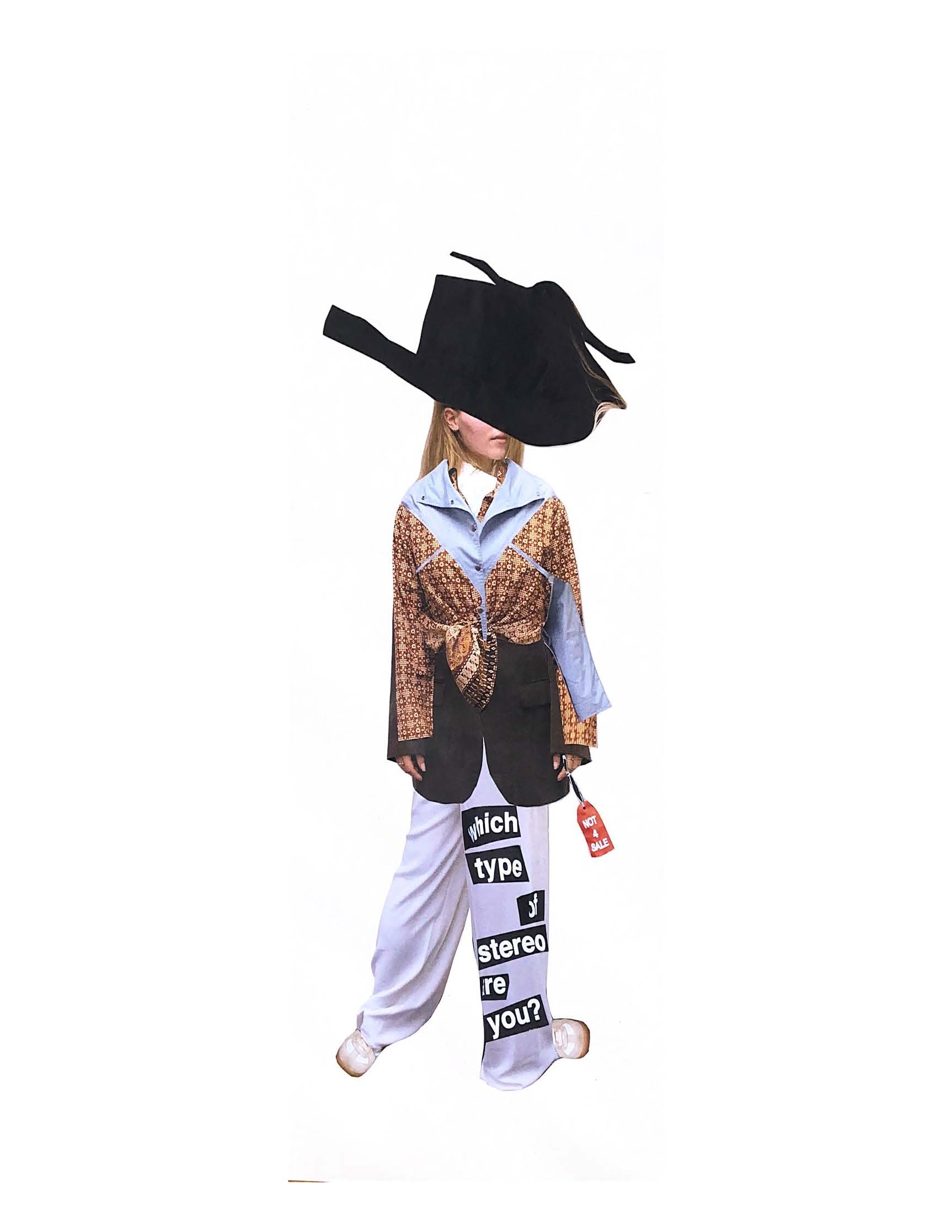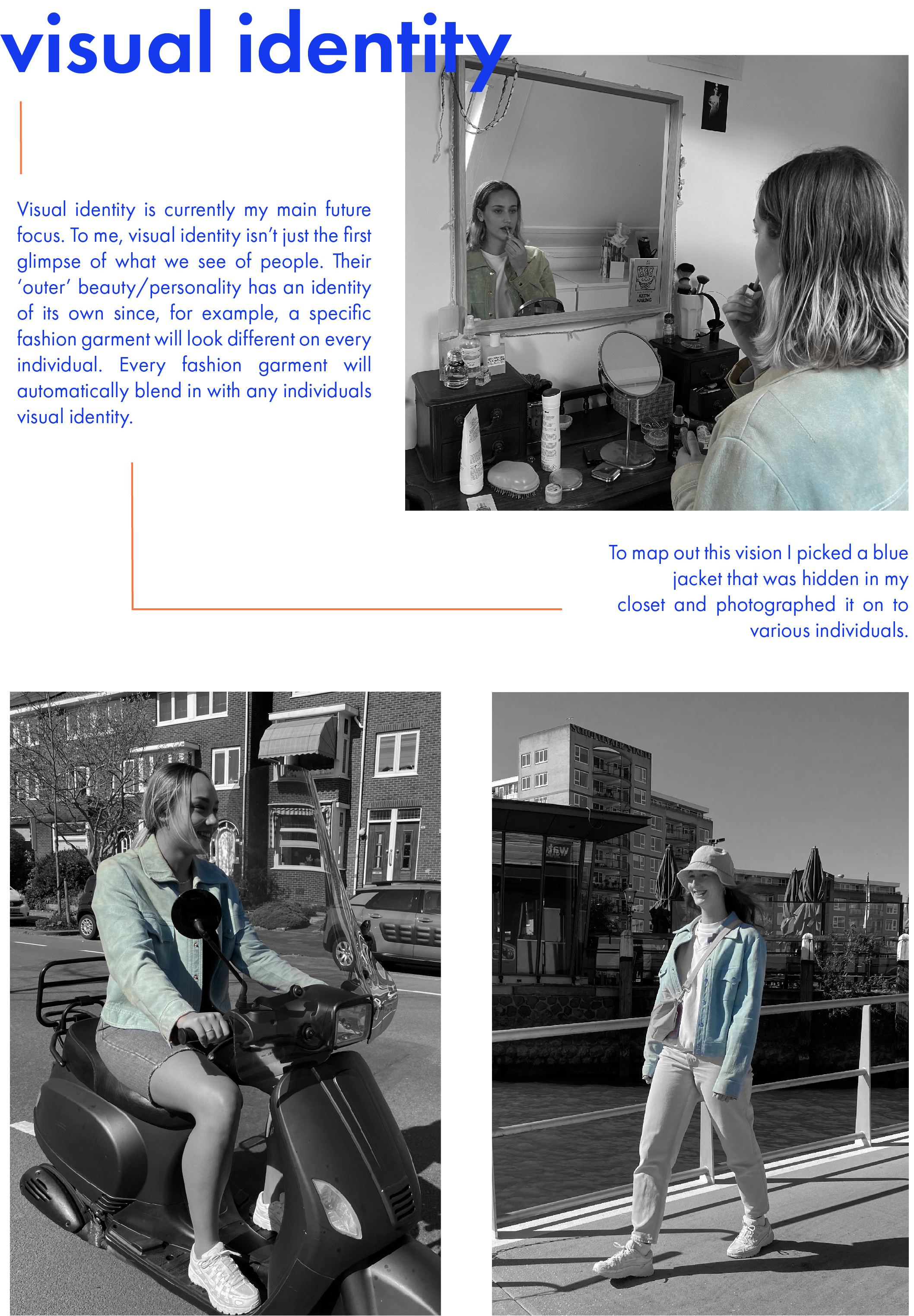FASHION & IDENTITY
Hyperstition - Clara Escalera (2018)
Visual identity & its sustainable value
Worn to wear - Lena Winterink (2019)
The technological development around visual identity
POTENTIAL RESEARCH QUESTIONS
Why do we look like this?????? (individually)
different point of views on sustainable fashion
slow fashion!
Is this going to be our daily outfit in 2080? (what do you think?)
How do we show our visual identity through clothing in the future??????
This question has been occupying me for a while now. As styles in fashion get developed, re-used, and adjusted through time. How can we be able to let go of the adjusting and literally re-use the clothing piece in 2020 as it was a big trend too in, for example, the 1980s? Or to be more specific: how can we do our adjusting in a more sustainable way. Should we do it in our homes with a sawing machine and give our personal twist to it? Should there be sustainable initiatives that adjust the old styles into the ones we expect in our current timeframe? OR should we let go of the whole material thing that comes with fashion and replace it with augmented reality?
Worn to wear by Lena Winterink elaborates the language of our physical body onto a garment. By using copper thread in its fabric, a chemical reaction will cause when the human body is going to sweat. The combination of copper thread and sweat causes discoloration onto the garment. Where the physical language of the human body gets translated onto a fashion garment.
What makes one unique??????
What is visual identity??????
My working group and I all have the same interests in research: fashion and identity. We thought it could be useful if we created a certain introduction to all of our researches. For that, we gave ourselves an assignment: bring a garment that aligns with your interests and that is valuable for your research. The garment I brought with me was a jumpsuit with a 1980s vibe. I thrifted the jumpsuit a few years ago and never noticed such details as on the jumpsuits that are in fashion nowadays. The collar on the jumpsuit made it recognizable for the 1980s. And it appealed to me that the jumpsuit itself is the basic that doesn't change through time. The adjustions that are added through time and fashion are the ones that change. Should we buy a whole new jumpsuit (that comes with a lot of waste of materials and environmental pollution) just for the adjustions that come with it? Why not use the same jumpsuit as in the 1980s and adjust it to our current timeframe ourselves!


MAPPING JILL ENSERINK . RESEARCH VISUAL IDENTITY . SEP/OCT 2020
FIRST MAPPING ASSIGNMENT
GROUP ASSIGNMENT . FASHION & IDENTITY
INSPIRATION & SUBSTANTIATION
FIRST PUBLICATION . OCTOBER 5 2020